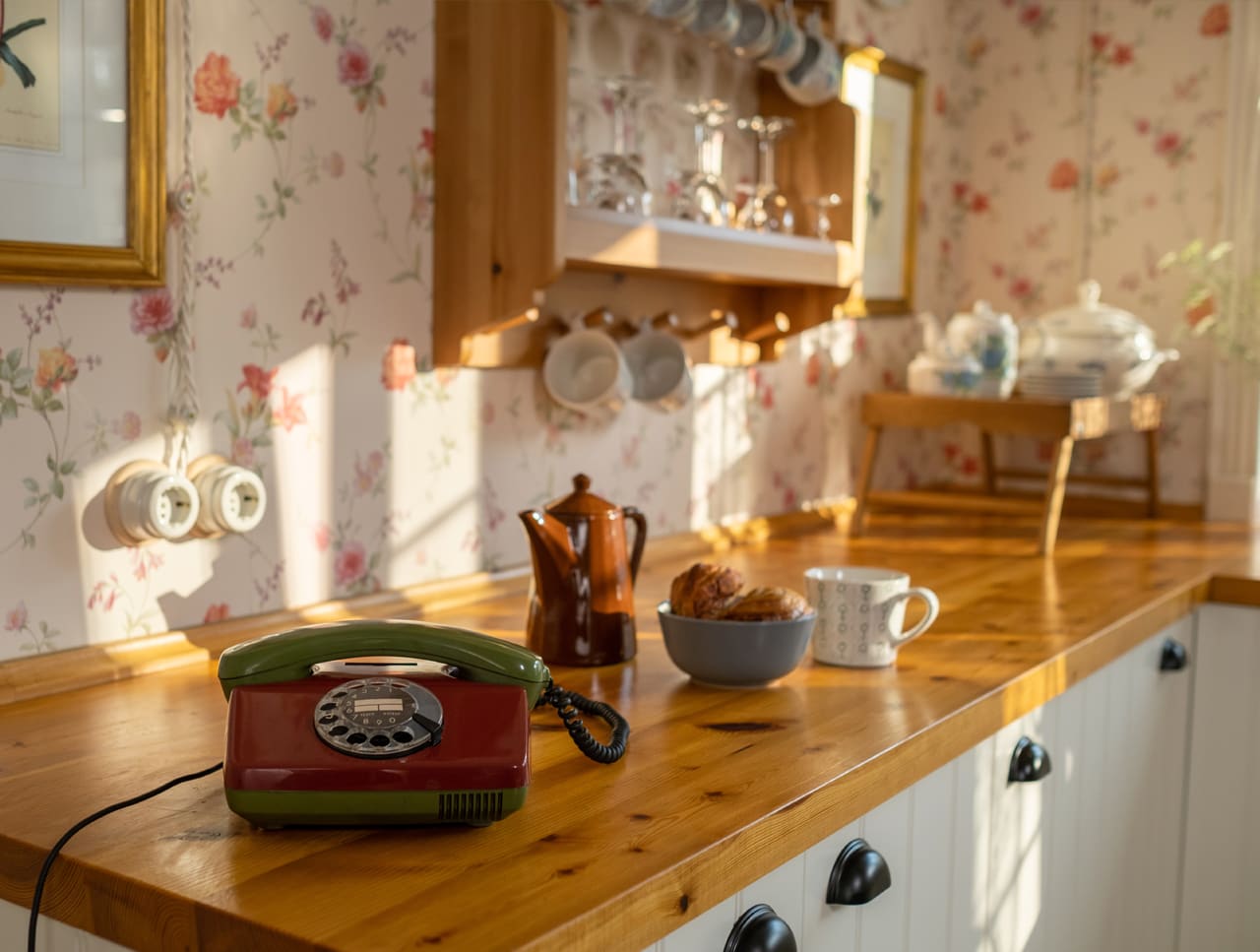Why People Choose to Replicate Wallpaper
There are a number of reasons why the idea of restoring a classic wallpaper pattern or design might appeal to someone. The most obvious motivation would be nostalgia, either for a bygone era, or a reminder of a childhood setting. We can’t count how many times someone has sent us a sample from their grandparent’s house, or the place they were raised, because they were buying a new house and wanted it to feel as much like home as possible.
There’s a special comfort that comes from our past - a strong bond to these roots is formed when you constantly surround yourself in a familiar environment. In addition to any sentimental motivation, there’s a sense of exclusivity when you’ve got an out-of-print pattern from a century ago, in pristine condition on your walls. You can rest assured that no one else has anything like it, and folks seem to enjoy this unique aspect.
Another common motive is the replacement of old or damaged wallpaper. Water, sun exposure, mold or acts of nature can cause irreparable damage. Wallpaper of the past was not without its issues. Inferior stocks were more susceptible to time and the elements, and it shows each time we get a sample that is torn, scratched, wrinkled and full of stains and basically falling apart.
The Most Popular Uses of Wallpaper Replication
Having worked in this industry for almost two decades has revealed a striking overlap of class, sector in the field of wallpaper reproduction. Everyone from homeowners and contractors, to developers and the Fortune 500 seems to be discovering that recreating wallpaper is not only a process of historical merit, it’s a versatile medium with a slew of applications.
A Nod to the Past
Reproductions of vintage wallpaper are frequently used in historic homes, museums, and other settings where historical accuracy is important. They can be used in both residential and commercial settings to evoke nostalgia or pay homage to a particular era or style.
The art of restoring ancient prints is particularly useful and relevant in the fields of television, film and theater. Few elements can successfully evoke the feeling of an era like the wallpaper of the time. It is a visual landmark, every bit as critical as the fashion people wear or the cars they drive.
Fits Any Home, Anywhere
Given the flexibility of the material and an almost limitless array of designs, replicas can be used in a diverse range of spaces, from bedrooms and living rooms to dining rooms and bathrooms. You can have as much or as little as you like, by adding a vintage accent wall or covering an entire room. You can adorn staircases, line bookcases, cover backsplashes, and line ceiling borders with a touch of beauty and craftsmanship.
Digitally recreating an old wallpaper can be a great choice for people who want to add a touch of vintage style to their home but don’t want to commit to a full vintage design scheme. A well placed design is often a reflection their individual style, taste and overall character.
An Interior Designer’s Dream
Recreating wallpaper can be the ideal DIY project for those who enjoy decorating and have a good eye for design. Aside from access to designs from well-known designers or artists from all over the world, wallpaper patterns can be used to create a cohesive design scheme that ties together different elements in a room, including furniture, textiles, floor coverings and accessories.
Creative license is often taken on vintage wallpaper designs, where colors may be adjusted to match a home. The resulting design can be further remixed through the use of new design elements, like a icons, monograms or a memento is added to the pattern for a personal touch and sentimental details which might be missed by the casual observer.
Vintage wallpapers also represent a diverse collection of styles that range over centuries and fit any aesthetic or theme. Create an ample range of looks, from bold, brash and colorful to subtle, simple and understated. It’s an effective method of inviting the grace and beauty of vintage design into modern interiors.
Popular eras for replication include Art Deco, Victorian, and mid-century modern., along with classical, modern, contemporary, transitional, and bohemian interior design styles, among many others.
There’s Simply No Other Way
Reproducing a wallpaper is sometimes the only option to incorporate vintage or retro style into a space without committing to a lengthy search for a product which may or may not exist. Many people who have fallen in love with a discontinued pattern are interested in recreating it in their home, even though it can be a challenging process, because there is no other choice available to them.
One of the most common reactions we get is from folks who can’t believe this service actually exists. The truth is that it’s a special niche. There are not a whole lot of printers willing to take on such a design challenge. It’s important to thoroughly research a company before you decide to collaborate.
Thankfully with Fine Print you have options. We can print your wallpaper replica, or you can simply pay for the digital file and print it elsewhere. No hard feelings - we know how special and particular these types of projects and totally understand.
Summary
Recreating discontinued or old leftover wallpaper can be a great way to preserve a piece of design history, and to bring a unique and special touch to a home. Discontinued wallpaper often carries a great deal of sentimental value, which is why it’s important to work with a reputable and experienced manufacturer or designer.
If you’re in the market for putting a new spin on some old wallpaper, give us a call at 212.619.5446 or email us at inquiries@FinePrintNYC.com.

